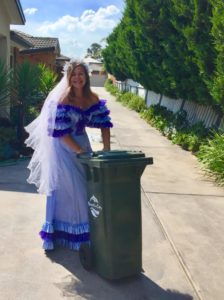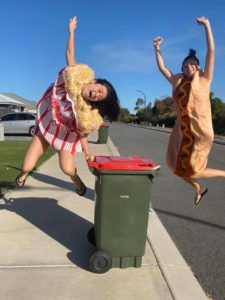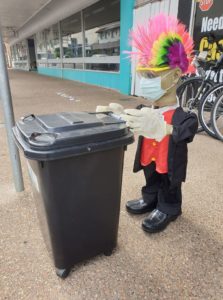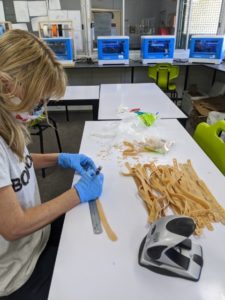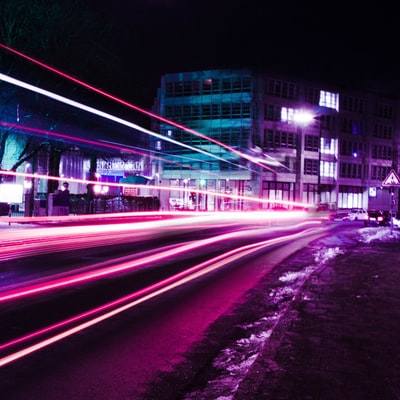Update 9 April
Today is 100 days since WHO (World Health Organisation) was notified of the first cases of “pneumonia with unknown cause” in China. How vastly the world’s landscape has changed since then.
What does WHO do?
Like me, you may be a bit hazy on what exactly WHO does. Helpfully, the Director-General of WHO, Dr Tedros Adhanom Ghebreyesus, took this milestone moment to reflect.
Actions ramped up fast from 1 January, leading up to the announcement of a ‘public health emergency of international concern’ on 29 January. WHO initiated this highest level of alarm when 98 cases were identified outside of China. More experts and teams were mobilised.
Since then WHO has worked around the clock establishing five key areas of focus:
- Supporting countries in building their capacity to prepare and respond.
This includes a strategic plan that was issued to help countries know how to act in response. WHO also has been raising millions of dollars to fund the response.
- Providing accurate information and fighting the infodemic
(Infodemic?? Yes, this is a new word that WHO made up. It’s when there is so much information concerning the problem, that it impedes the solution.)
It’s an impressive list:
- 50 evidence-based pieces of technical guidance
- Tapping into world expert networks to capture support
- Adapting advice for a wide variety of people groups
- Daily situation reports and regular press briefings
- Working with numerous tech platforms (like Facebook, Google, Instagram, Linked in, Whatsapp, and Viber) to counter myths and misinformation with reliable advice.
- A Whatsapp and Viber chatbot in multiple languages to reach the person on the street with the latest information (currently 14 million followers)
- An online workshop to crowdsource ideas from over 600 experts on ways to combat the infodemic.
- Working with celebrities to promote healthy activity and world solidarity
- Ensuring supplies of essential medical equipment for frontline health workers
Already WHO has shipped millions of items of personal protective equipment to 133 countries, diagnostic tests to 126 countries, and they’re working on sourcing more.
They’re working with international financial institutions and the private sector to dramatically upscale production and supply of of life-saving medical equipment, to meet the need.
- Training and mobilising health workers.
- More than 1.2 million people have enrolled in 6 courses in 43 languages on the OpenWHO.org platform. The target is to train tens of millions, and WHO is ready to train hundreds of millions.
- Experts have been deployed around the world.
- Accelerated research and development.
WHO has brought together more than 400 of the world’s leading researchers to accelerate research priorities, and is helping develop research protocols. They’re coordinating 90 countries working together to find effective therapies. 130 scientists, funders and manufacturers recruited from around the world have committed to work with WHO to speed up the development of a COVID-19 vaccine.
And in all this, there is this underlying mission:
“We are especially concerned with protecting the world’s poorest and most vulnerable, not just in the poorest countries, but in all countries.”
(A round of applause for WHO!)
Zoning back in on Australia:
Why are Flights from Wuhan Landing in Australia?
Federal Health Minister, Greg Hunt, clarified that the only people entering Australia are Australians returning home. Any passengers will be quarantined. Each plane is highly likely to be carrying essential medical supplies, or supplies that are critical for the economy. These deliveries are a lifeline.
Regarding the traces of the virus on packaging: the coronavirus would not outlast the duration of these flights, particularly considering the temperature changes to which freight is exposed.
Don’t Stop Going to Your Doctor
It seems that Australians are worried about going to their doctor for usual health concerns. Firstly because we fear our safety, and secondly because we’re worried our doctor is overrun with COVID-19 cases.
Apparently, some doctors and specialists suddenly have much more time for golf, and are concerned. One pathology provider’s activity was down by 40% this week.
Dr Tony Bartone, President of The Australian Medical Association, explained why this is not good. In a usual week in Australia, tens of thousands of diagnoses are made of cancers, diabetes or heart disease. Early detection of these conditions means less complications and less deaths. If Australians are putting off visits to their doctors, the result will simply shift the load of serious medical cases into the future, when they are more complicated to treat.
All three medical bigwigs in a press conference in Canberra yesterday, urged Australians to keep up with usual medical reviews, prescription repeats and regular blood tests as needed. For those who would like to avoid face-to-face contact, telehealth or phone appointments are now an easily accessible option.
Healthcare doesn’t take a holiday. Go see your doctor if you need to.
The Stats for Australia
- There have been 6,052 confirmed cases of COVID-19 in Australia, and sadly, 50 have died
- There are just under 100 people in ICUs and currently about 36 people on ventilators.
- 2813 people have recovered.
We’ve reached a 3-day rolling average of a transmission rate of approximately 2% (down from the initial 30%).That could spike at any time, but it shows that the flattening curve has been consolidated.
Hope Over Fear
Loving the World Through Generosity
The world has truly come together in global solidarity when it comes to financing the mammoth efforts to combat COVID-19 around the globe. WHO reports that when they called for funding, governments and partners rose to the challenge.
More than US$800 million has been pledged or received for the response. Part of that is the UN’s Solidarity Response Fund which has exceeded all expectations by raising US $140 million from more than 229,000 individuals and organizations.
Celebrities have also been rolling up their sleeves, with many donating to charities that are helping in the fight to combat COVID-19. Some of the really generous donations include:
Twitter founder, Jack Dorsey – donated $1 billion
Bill and Melinda Gates Foundation – donated $105 million
Paris Hilton (The Hilton Foundation) – donated $10 million
Apple – donated $10 million
Lady Gaga – raised $35 million
Leonardo DiCaprio – raised $12 million
Oprah Winfrey – donated $10 million
Rihanna – donated $5 million
Celebrities who have donated $1 million include Roger Federer, Blake Lively and Ryan Reynolds, Dolly Parton, Pink, Elton John, Kanye West and Kim Kardashian, Bruno Mars, Arnold Schwarzenegger, Angelina Jolie, George Clooney, Kylie Jenner, Giorgio Armani.
Your Tip for Today
Keeping Mentally Healthy
As we go into a meaningful weekend for many, where we might usually have been gathering at faith services for Easter or Passover, some may feel particularly lonely, anxious or low in mood, as they navigate the changes.
It’s a good time to reach out to others, especially those who may be lonely – perhaps with a food delivery or a friendly phone call.
A new 24/7 support service specifically designed to help people through the COVID-19 pandemic is now available free of charge to all Australians. It’s coordinated by Beyond Blue and offers phone counselling, self-help tools and peer-to-peer support.
You’ll find this support on their website:
https://coronavirus.beyondblue.org.au
or via phone:
1-800-512-348
For a few basic tips, Beyond Blue offers the following wellbeing advice:
- Try to maintain perspective. It’s reasonable to be concerned, but remember how many experts around the world are working hard to contain the virus and develop a vaccine.
- Find a healthy balance in relation to media coverage. Limit your media intake if it’s upsetting you.
- Try to maintain a practical and calm approach. Don’t panic – follow official advice.
- Try not to make assumptions. Contribute to a sense of community wellbeing by remembering that the virus affects anyone regardless of nationality or ethnicity.
- Seek support, especially if you have experienced mental health issues in the past. Stay connected with family and friends online or by phone.
Emerging Minds offers a comprehensive Guide to Living with Worry and Anxiety Amidst Global Uncertainty
Some alternate options:
- Lifeline Australia:13 11 14 Lifeline crisis support chat
- Suicide Call Back Service:1300 659 467 Suicide Call Back Service online chat and video chat counselling
What About You?
At this special time of year for Christians and Jews, I extend a blessing to you as you work out different ways of celebrating together.
- What good news story do you have to share?
I’d love to hear your stories.
Information Sources
WHO Director-General’s Media Release – 8 April
Federal Health Minister Interview with Alan Jones – 9 April
Free Coronavirus Wellbeing Support Service – 9 April
Federal Health Minister, Deputy Chief Medical Officer, and President of Australian Medical Association Press Conference – 8 April
https://www.goodnewsnetwork.org/jack-dorsey-pledges-billion-dollars-to-covid-relief/
Celebrities Give Back Through the Coronavirus Pandemic
https://www.eonline.com/au/news/1131008/justin-bieber-and-other-celebs-giving-back-throughout-the-coronavirus-pandemic#photo-1084734
https://www.vogue.com/article/celebrities-donating-fundraising-coronavirus-relief
Emerging Minds: Guide to Living With Worry and Anxiety
https://d2p3kdr0nr4o3z.cloudfront.net/content/uploads/2020/03/27134648/guide_to_living_with_worry_and_anxiety_amidst_global_uncertainty_en-gb.pdf




